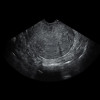
 IJCP Editorial Team
IJCP Editorial Team
Perinatal Catatonia in Twin Pregnancy case of Unknown Chorionicity and Gestational Age
A report describes a case of a 36-year-old G6P5005 with no prenatal care and a spontaneous twin pregnancy of unknown chorionicity who presented with altered mental status. Her partner accompanied her, who reported that she was two days past her due date" and was becoming more unresponsive." The patient could not speak any words and responded to questions only with simple noises. She could point to the words "yes" and "no" written on paper to answer certain questions. Most of the patient's history was obtained from the patient's partner, who denied any psychiatric illness or hospitalization history. A limited bedside growth scan showed approximately 36 weeks gestational age, with both babies in breech presentation.
Consultation with the psychiatry team suggested that she required multiple verbal prompts to obey simple commands and showed reduced response to stimulation over time with progressive difficulty moving her fingers to point to "yes/no" written on paper. On mental status examination, she showed poor eye contact, psychomotor slowing, and flat affect and looked internally occupied. She pointed to "yes" when asked about hearing voices. The features like mutism, difficulty moving, waxy flexibility on prompting, fluctuating alertness, and internal preoccupation, prompted a diagnosis of hypoactive catatonia. She was administered lorazepam 1 mg every two hours.
From an obstetric standpoint, she demonstrated an irritable contraction pattern on tocometry and, on a cervical exam, showed 4 cm dilation/50% effacament/-3 station.
Due to her resistibility and instability for IV placement, she received 5 mg intramuscular haloperidol and 2 mg intramuscular lorazepam for sedation, which allowed for the safe placement of an IV. She continued to regularly contract, and a repeat examination showed 5-6 cm dilation/75% effacament/-2 station with breech-breech presentation reconfirmed on ultrasound. She then underwent an uncomplicated primary cesarean section under general anesthesia.
The Psychiatry team continued to follow her postoperatively and transitioned the patient to Lorazepam 2 mg every six hours, which slowly began to produce a clinical response. On postop day 0, she became intermittently verbal with more purposeful movements and could sometimes answer questions. On postop day 1, she could ambulate with supervision, eat and use the bathroom independently, and visit her babies in the NICU. However, her overall mental status continued to wax and wane throughout the day, and she still experienced nonverbal periods with psychomotor slowing.
The psychiatry team determined that the patient met the criteria for inpatient psychiatric hospitalization, given her grave disability secondary to her catatonic state. The physicians transitioned her to lorazepam 2 mg every 8 hours and performed a lumbar puncture to rule out autoimmune encephalitis before discharging her to the nearby psychiatric hospital on postop day 3. Her workup included normal LP, metabolic labs, and no evidence of seizure on EEG. Brain MRI demonstrated artifact versus reduced diffusivity within the caudate nuclei bilaterally and the cerebral cortex bilaterally, which is often seen in acute catatonia.
Her prior reports demonstrated a history of major depressive disorder with catatonic features, for which she previously received lorazepam 1 mg three times daily. During her psychiatric admission, lorazepam was up titrated to 3 mg thrice daily due to continued persistent catatonia and frequent relapses. The lorazepam treatment rendered a waxing and waning effect on her catatonic features, demonstrating baseline functionality after her dosages that regressed back to catatonic before her next dose. She also received aripiprazole due to possible psychosis with reported auditory hallucinations, along with escitalopram due to depressed mood and a previous diagnosis of major depressive disorder. She declined ECT numerous times and eventually received a discharge after a 33-day stay with improved mood and a Bush-Francis score of 0 with continued lorazepam treatment.
The patient received a discharge on lorazepam, aripiprazole, and escitalopram, with a plan for close outpatient follow-up.
Farias R, Hartnett J. Perinatal Catatonia in a Patient with a Twin Pregnancy of Unknown Chorionicity and Gestational Age Presenting in Spontaneous Preterm Labor. Case Reports in Obstetrics and Gynecology. 2022;2022. https://doi.org/10.1155/2022/3143601

IJCP Editorial Team
Comprising seasoned professionals and experts from the medical field, the IJCP editorial team is dedicated to delivering timely and accurate content and thriving to provide attention-grabbing information for the readers. What sets them apart are their diverse expertise, spanning academia, research, and clinical practice, and their dedication to upholding the highest standards of quality and integrity. With a wealth of experience and a commitment to excellence, the IJCP editorial team strives to provide valuable perspectives, the latest trends, and in-depth analyses across various medical domains, all in a way that keeps you interested and engaged.










Please login to comment on this article